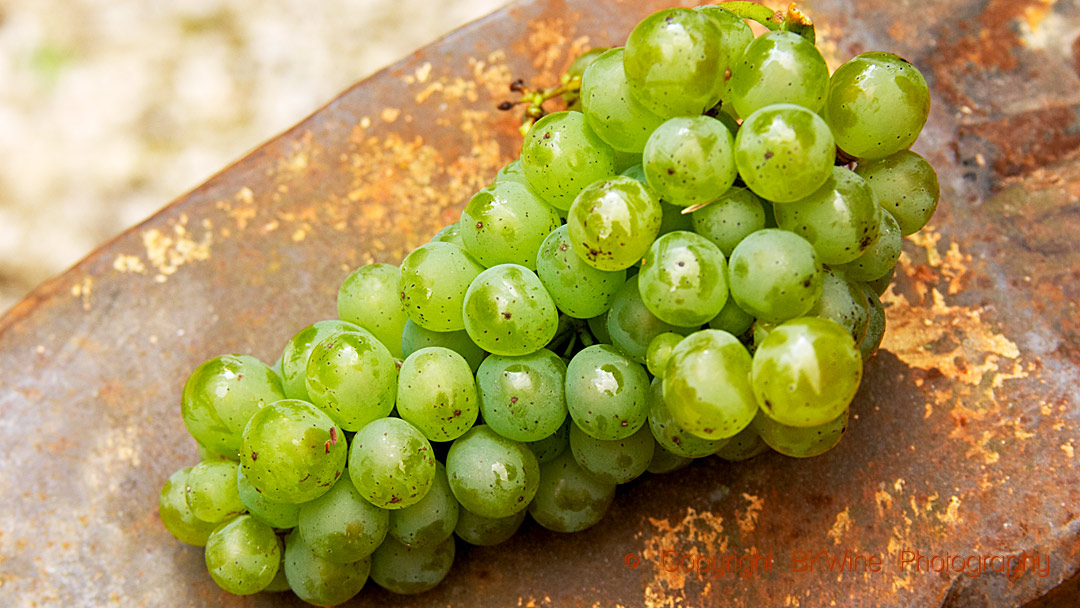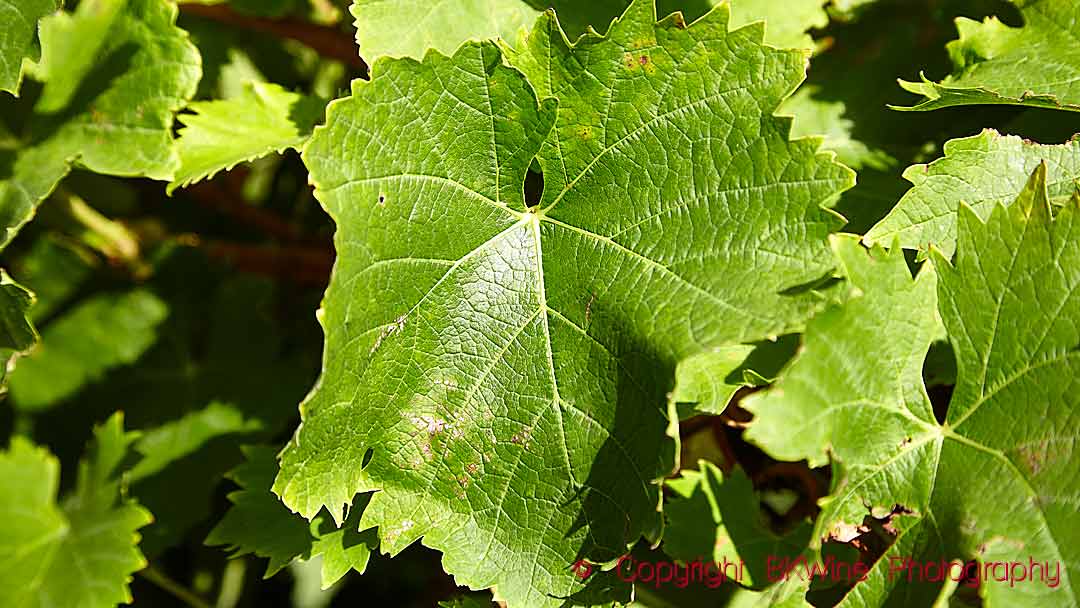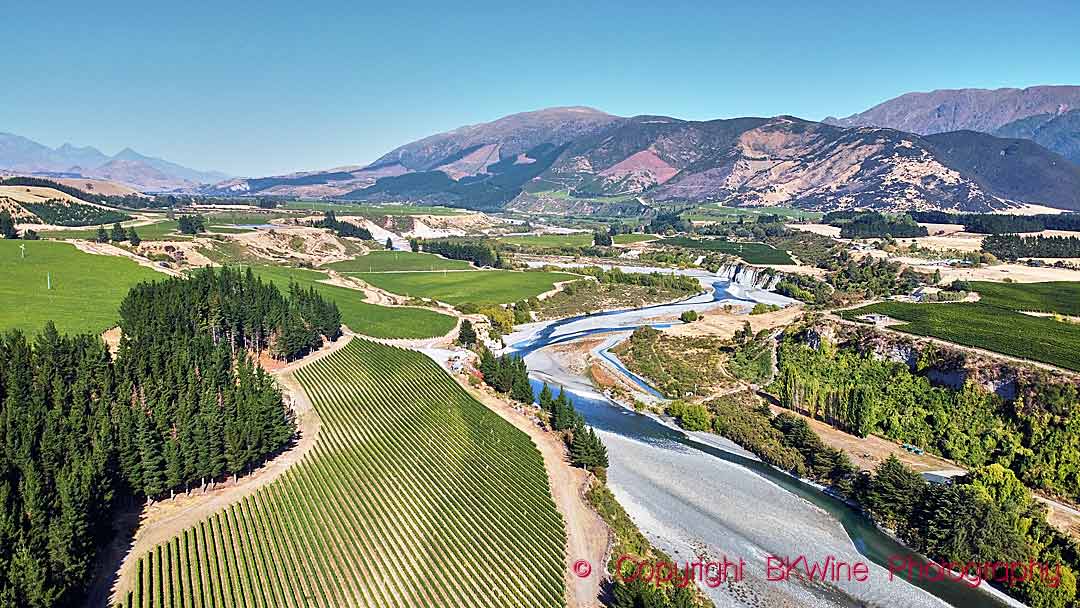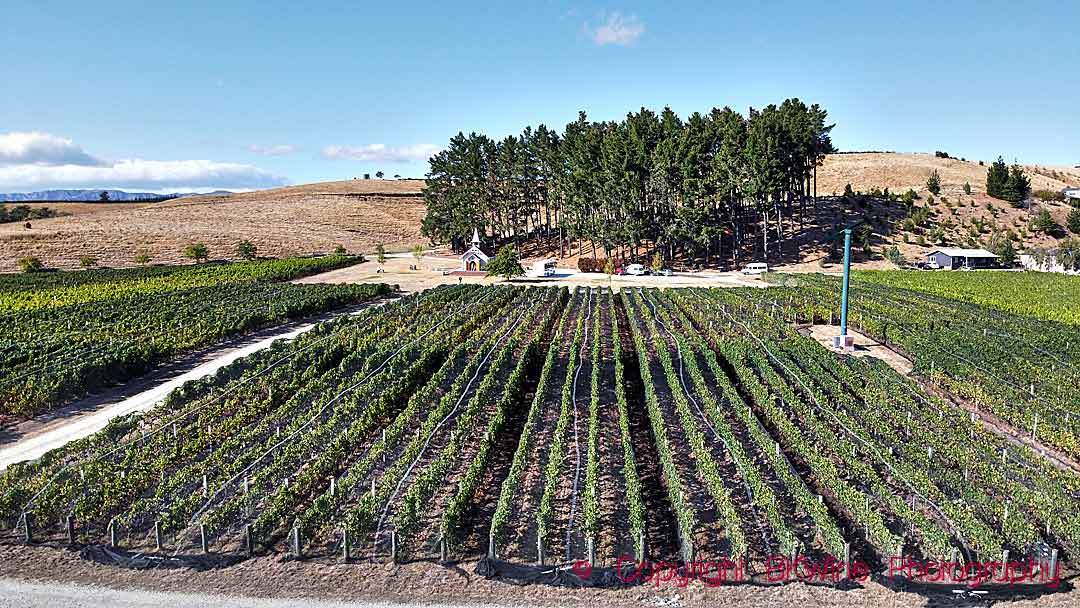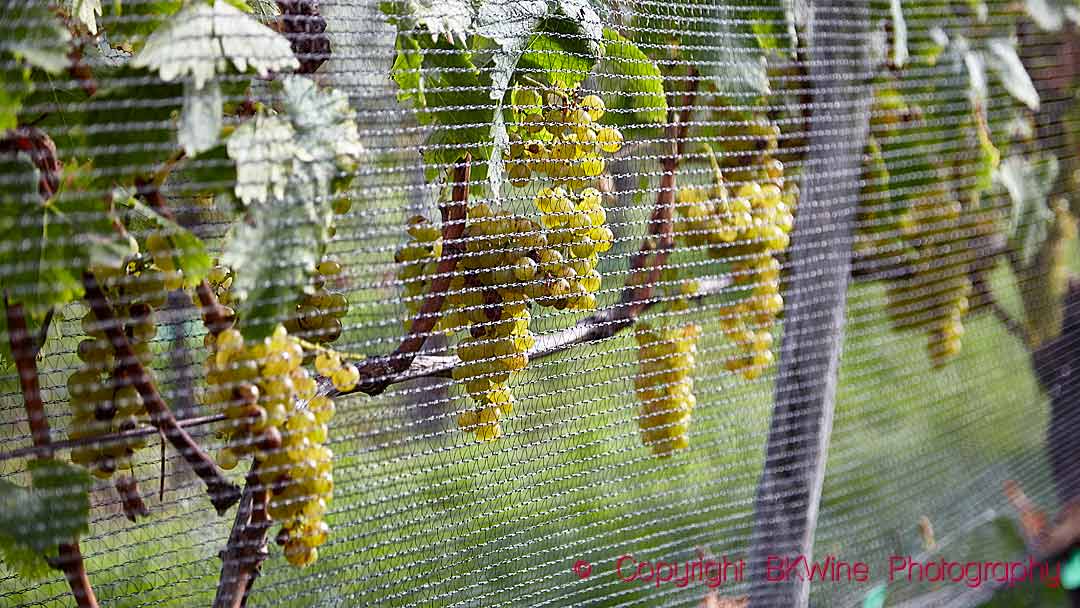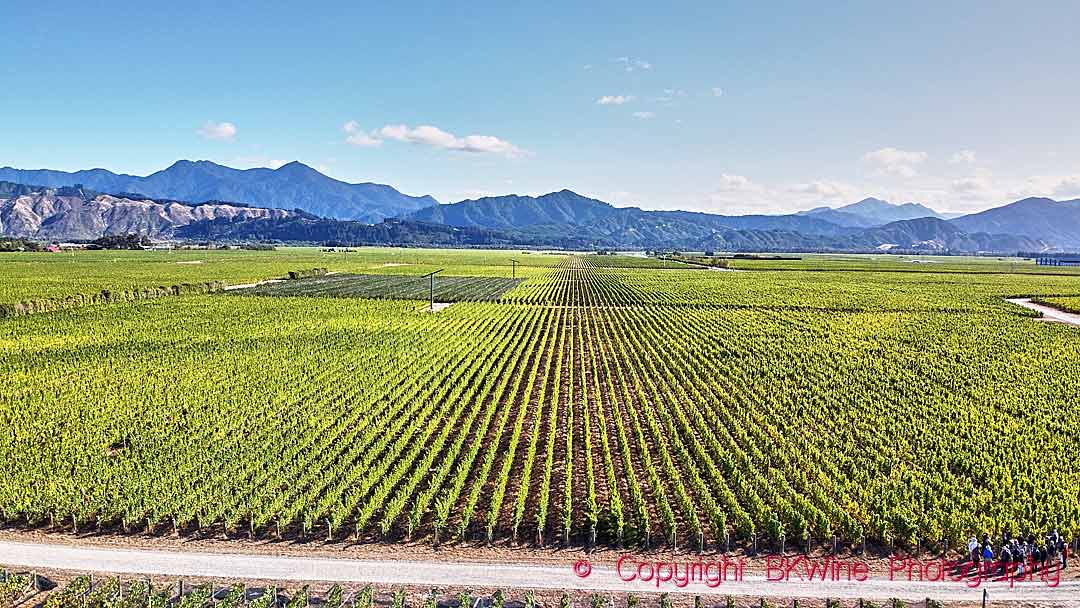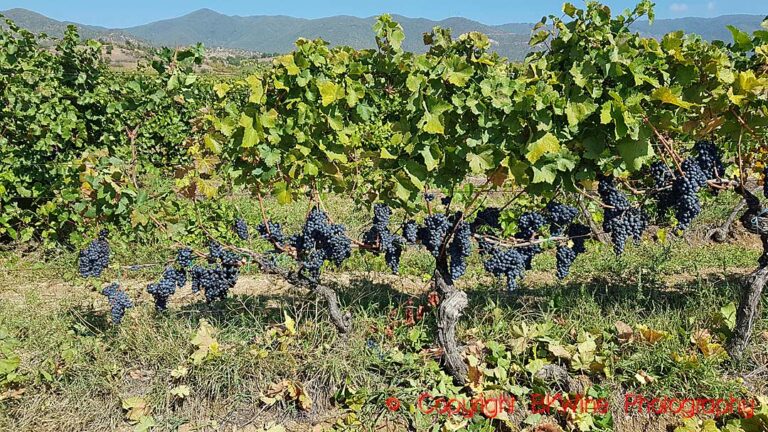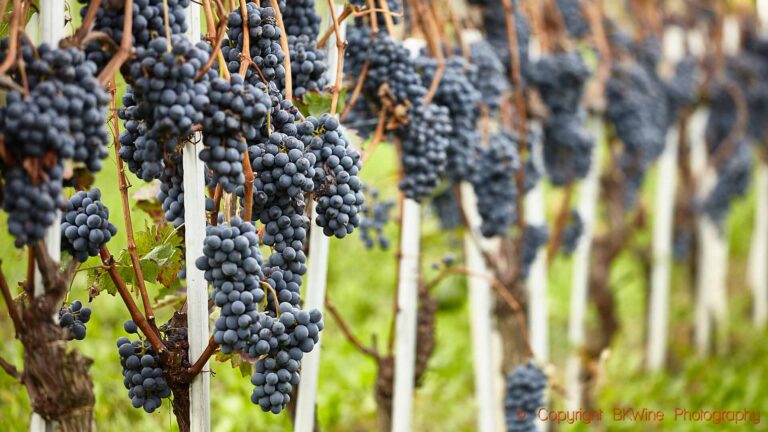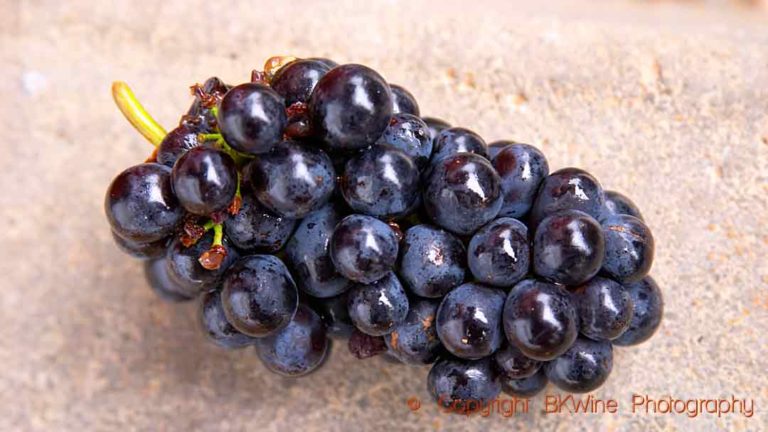Sauvignon blanc is a popular grape. It has increased enormously in the last 20 years. A dozen countries have significant plantings, and another ten have a smaller, but growing, surface. Sauvignon blanc grows best in a slightly cooler climate. It often has an aromatic and straightforward character. But it is more complex than you might think. In fact, it can produce world-class wines, if you know where to look.
Sauvignon blanc was mentioned in France as early as the 16th century. It is now planted around the world, and it continues to increase. Twenty years ago, there were 65,000 hectares in the world, and now there are 124,000 ha. France is the most important country with a little over 30,000 hectares, but not all that far ahead of number two.
Sauvignon blanc gives a dry wine, aromatic, with fresh acidity and aromas reminiscent of gooseberries, rhubarb, passion fruit, green apples, grapefruit and sometimes boxwood and tropical fruit. You easily recognize it, thanks to these unmistakable aromas. It is a wine you often drink young because you want the fruit and the aromatic character intact.
But the winemaker can, in different ways, influence the character of his sauvignon blanc. If you put the wine in oak barrels for a few months, for instance, the grape is not so easy to recognize anymore. If you harvest it by machine, the typical aromatic components (e.g. thiols) tend to come more forward.
This is a longer version of an article published on Forbes.com.
This is an article in our series of presentations of the world’s most popular and exciting grape varieties. Read other articles here:
There are many different volatile compounds and esters in the wine that give us all the fantastic aromas. Those who provide sauvignon blanc with some of its specific aromas have been identified as thiols. They are the main molecules responsible for the citrusy and tropical fruit aromas.
These thiols are not found in the sauvignon must, but a molecule present in the must causes the thiols to form during fermentation. Different yeast strains have different effects on the formation of thiols. It is thought to be an enzymatic process dependen on the yeast. Depending on how much “typical” sauvignon character you want in your wine, you can use different yeast types.
The thiols give well-liked aromas and producers want to know more about them. Research is currently being done on how the work in the vineyard (e.g. machine harvest) can affect how the thiols develop during fermentation.
Another important aromatic component in sauvignon blanc wines are the methoxypyrazines. They are the ones responsible for the vegetal, “green” or herbaceous character.
Sauvignon blanc tends to give large harvests, which, it is believed, can lead to one-dimensional wines. To counter-act that you can keep the vigour down by planting it in poor soil and by choosing a suitable rootstock. The clusters are compact and can suffer from grey rot, a dangerous fungus disease of the vine, if it is humid. It is also sensitive to powdery mildew, but it has good resistance to downy mildew.
France
France’s most famous sauvignon blanc wines come from Sancerre and Pouilly Fumé and from the neighbouring villages of the Upper Loire, such as Quincy, Menetou-Salon and Reuilly. The grape character is distinct with aromas of citrus, elderberry flowers and green apples. The wines are fresh, but they also have a certain body and often a good complexity. The wines have a good ageing potential, if you want, and develop a pleasant honey tone over the years. But most people drink the wines young.
Some producers barrel age their wines or let them spend some months on the lees, to give a little extra body.
France’s second sauvignon stronghold is Bordeaux. Some Graves and Pessac-Léognan are 100% sauvignon. The great André Lurton was fond of the grape and his chateaux (Louvière, Rochemorin, and others) are all 100% sauvignon.
But often, sauvignon is blended with sémillon in Bordeaux. Sémillon has a fatter character and more discreet aromas. They blend well together. In Graves and Pessac-Leognan, they often ferment and age in oak barrels which softens some of the grape’s greenish notes. The wines get a creamy and full-bodied mouthfeel. The best ones age beautifully, and they gain a slightly oxidized tone.
Many AOP Bordeaux and AOP Entre-deux-Mers are 100% sauvignon blanc. They are lovely everyday wines, aromatic and straightforward.
In Sauternes, sauvignon blanc is grown together with sémillon. This latter grape dominates but sauvignon blanc can also suffer from noble rot. The proportions are usually 80% sémillon and 20% sauvignon blanc but some château, e.g. Château Guiraud, likes to have a little more sauvignon blanc to freshen up the mix.
New Zealand
The world’s newest sauvignon blanc country is New Zealand. The first sauvignon blanc was planted in Marlborough in 1973 by Frank Yukich, CEO of Montana (now renamed the Brancott Estate). The grape is the country’s most planted by a large margin. The area has now reached 23,000 hectares after being only 2,400 hectares 20 years ago. The grape’s success in New Zealand has been spectacular. “It stunned the world; people couldn’t believe sauvignon blanc could be so flavourful“, says Damien Yvon at Clos Henri in Marlborough.
The style is a bit overwhelming at times. Many New Zealand sauvignon blanc wines are uncomplicated wines from high yields. “It is important to control the vigour of the plant,” Damien continues. “We need to stress the vines a little, just enough so that they stop growing and ripen the fruit instead.”
He likes to give his sauvignon blanc some ageing on the lees to give it a mouthfeel and ageing potential.
Chile, South Africa
Chile is the world’s third sauvignon blanc country with 14,000 hectares. The surface has more than doubled in 15 years. As more cool climate regions have emerged, such as San Antonio and Casablanca, it has become more popular. Some winemakers obtain more structured wines with a few hours of skin contact.
South Africa is in fourth place with just over 9,000 hectares. Constantia, a posh suburb to Cape Town as well as a wine regioin, is known for its sauvignon blanc. Being located at the back of Table Mountain means that winds from False Bay blow directly on the vineyards.
Walker Bay on the south coast is also cooled by the Ocean’s cold water, which gives subtle, crisp notes to the sauvignon blanc wines. Cape Agulhas is a new location for the grape that has proven to have perfect climate. It is located east of Walker Bay, along the coast, at the southernmost tip of South Africa.
USA, Australia
Sauvignon blanc came to California in the 19th century and quickly became associated with the Sauternes wines in Bordeaux. For a long time, it was mainly used for sweet wines. In the 1960s, Robert Mondavi launched dry sauvignon blanc under the name “fumé blanc” to distinguish those wines from the sweet wines (moreover, it is said, he thought it would be easier for Americans to pronounce). He also put the wines for a few months in oak. His venture was successful, and the sauvignon planting increased.
Today it is a popular grape in the United States, even though with its 6,700 hectares, it is far behind chardonnay that is planted on 43,000 hectares. The grape is also having some success in Washington.
Australia has just over 6,000 hectares. It is the second most planted white grape after chardonnay (which has a little over 20,000 ha). It grows a bit all over the country. Some of the best come from cool places like Tasmania, Adelaide Hills and Western Australia, where Margaret River is known for its sauvignon blanc-sémillon blends.
Sauvignon blanc facts
Acreage world-wide:
- 124, 000 hectares
Main countries where grenache is grown:
- France 31,000 ha
- New Zealand 23,000 ha
- Chile 14,000 ha
- South Africa 9,200 ha
- USA 6,700 ha
- Australia 6,000 ha
Sauvignon blanc’s character:
- Sauvignon blanc gives a dry wine, aromatic, with fresh, often high, acidity and aromas such as gooseberry, rhubarb, passion fruit, green apples, grapefruit and sometimes boxwood and tropical fruit.
Travel
You will have many opportunities to taste outstanding sauvignon blanc wines on the BKWine wine tours: French sauvignon blanc on the wine tour to Bordeaux, or the excellent South American version on the wine tour to Chile and Argentina, some very southerly coastal sauvignon blancs on the wine tour to South Africa, and of course the most sauvignon blanc-famous country of all, on the wine tour to New Zealand.
Travel to the world’s wine regions with the wine experts and the wine travel specialist.
Outstanding and famous wine tours. BKWine wine tours.


